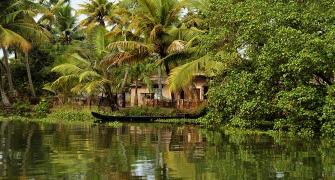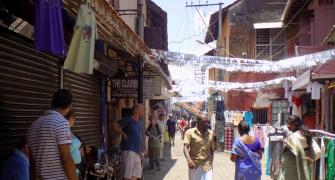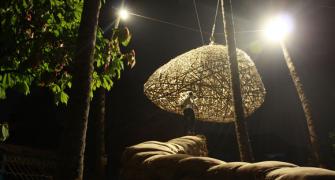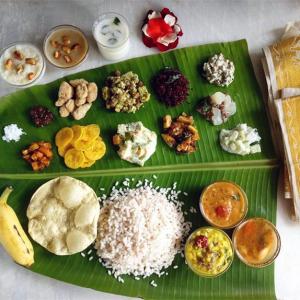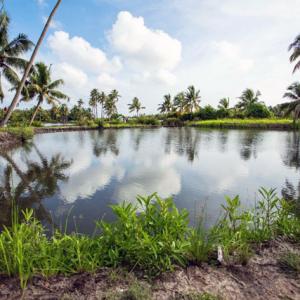Not many have seen the Kerala in which coconut trees are sparse but waterfalls, lush valleys, and deep forests are abundant.

Photograph: @vippinkp via @keralatourism/Facebook.
The first images that pop up in your mind when you hear the name 'God's own country', Kerala, are of the backwaters, coconut trees, house boats and of course Kathakali, elephants, chanda (a percussion instrument) melam and puttu with kadalai or fish curries. But not many would have seen the beautiful waterfalls, rivers and a Kerala in which coconut trees are sparse.
This is a Kerala of beautiful green valleys as you drive by and of deep forests that reveals the tribal way of life and breathtaking trekking points.
Welcome to North Kerala, a lush green topography yet to be explored widely and which offers perfect getaways for those who are looking for adventure, culture and the serene, thick forests. T E Narasimhan and Gireesh Babu explored a few such places to see the less known facets of the state.
Day 1
After over 6-7 hours' journey from sultry Chennai, as the train enters Kerala through Palakkad, one can hardly help notice the drizzle.
As the train goes forward, it is raining all over. It refreshes one in a fraction of a second once we step down at Tirur, three hours ahead of Kozhikode.
The journey from Tirur to Nilambur passes through the green valley. After a two-hour journey, we reached our first destination Nilambur in Malapuram district.
Nilambur
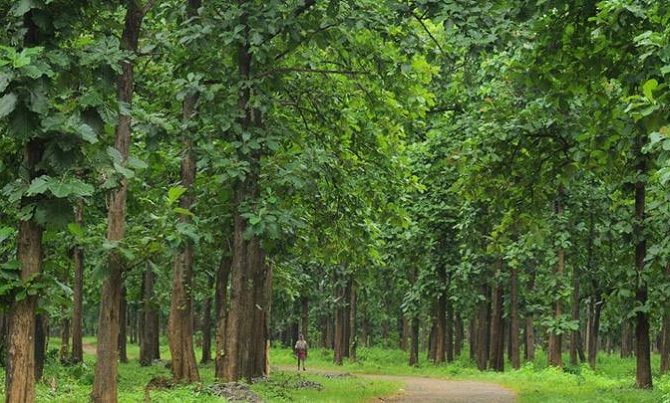
Photograph: @KeralaToursim/Facebook.
This place is renowned for the oldest teak plantation in the world.
To reach Connolly's Plot, a silent spectator of a dynamic history that evolved over hundreds of years, you have to take a thrilling walk right across the River Chaliyar on a long overhanging bridge. The suspension bridge, just over 140 feet, is the largest of its kind in Kerala.
It was M V Conolly, then collector of Malabar, under whose orders Chathu Menon raised the first tree for the 1,500-acre Nilambur Plantation between 1841 and 1855, and laid the earliest stone in the foundation of systematic forest management in India. Today, the entire plot is spread across 2.31 hectares besides the river Chaaliyaar.
Adding to the excitement was a tribal village, located in the deep area, where 15 families still stay away from the cities/ towns.
To learn more about the plantation, we headed to the Teak Museum, which is regarded as the first of its kind in the world and the only one in India; it houses the treasures of historical, aesthetic and scientific aspects of Teak.
Nilambur reserve forest is noted for its rich rain forests. As the caretaker warns us, this is the time elephants normally venture out, so we decided to walk back.
A half-hour journey from here, through the dense forests, takes one to Mancheri, the home of the Cholai Naikars, a primitive tribe.
Thusharagiri Waterfall
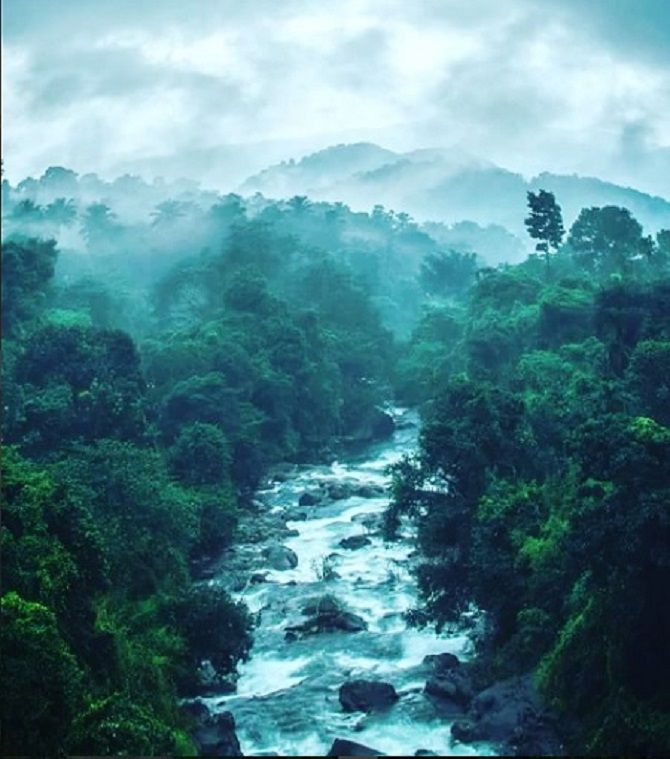
Photograph: @shakeebsha/Instagram.
After a near two-hour drive enroute to Kozhikode, we stopped at Thusharagiri, or the 'the mist-capped mountain'. It is located in a small tribal village.
Two streams originating from Western Ghats united here to form Chalippuzha River.
An exhilarating eight-kilometer trek through falls and plantations is truly mindblowing.
Of course one should not forget to order food at the homes and small hotels on the foothills. By the time you return it will be ready.
This is a great place for trekkers and mountain climbers and other adventure enthusiasts.
Day 2
After an overnight stay, Day 2 started with an ethnic puttu with kadalai, and appam with stew before we headed to Paithalmala.
Lokanarkavu

Photograph: @arayilpdas/Instagram.
Our first stop was the 1,500-year-old Lokanarkavu temple at Kozhikkode.
The goddess at Lokanarkavu takes the form of Durga, not Kali. It is believed that the goddess travelled with the Nairs to Lokanarkavu as a lady who followed the 500 Aryans.
This temple is said to be in Athyuthama state. Even today, all Kalaripayattu artistes seek the blessings of the deity before their debut due to the temple's association with legendary hero Thacholi Othenan.
Manikothu temple, a couple of kilometers away from here is where Othenan, the great Kalari practitioner had his training. The place is considered to be the birth place of the native martial art form of Kalari.
We then headed to Paithamala.
Paithamala
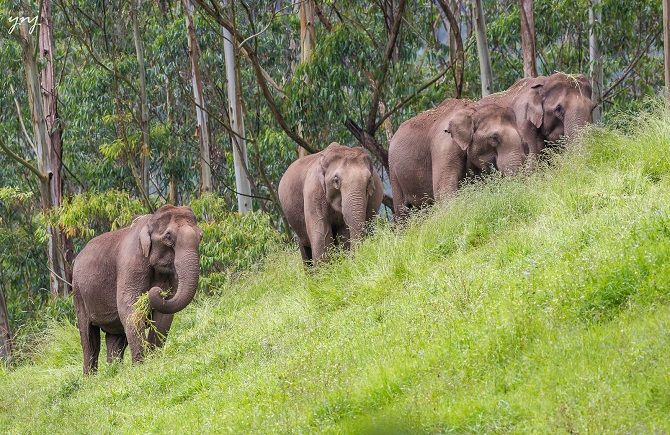
Photograph: Yogendra Joshi/Flickr.
Paithalmala, which the locals call Vaithalmala, is a breathtaking hill station in Kannur District in the Western Ghats near the Kerala-karnataka border.
The drive to Paithamala itself is adventurous thanks to sharp turns and steep slopes. It is said to be named after Vaithal Kon (Kon means King), who visited the hill top from the other side of the mountain during his vacations.
At a height of 4,500 feet above sea level, the mountain here spreads across over 500 acres covered with dense forest, and opens for adventurous trekking passing through waterfalls, wildlife, exotic flora and fauna.
A 1-1.5 km walk through the forest is the best part of Paithalmala, but can be risky as blood sucking leeches are seen often. You may encounter a few springs on the way and the constant rainfall has resulted in mosses over the tree trunks, which on a misty day could show you the mistique side of dense forest.
The moist and rain are unpredictable, present throughout the year regardless which season you are in.
In June and July, elephants may use the route down the hill simply to climb up the other side and get to the side of the mountain that falls under Karnataka's control.
Coorg, another tourist destination in Karnataka, is close by, but not accessible from Paithalmala.
The forest ends in a grassland leading to the tip of the hill, which resembles the forehead of an elephant.
At the end of the trek from the base, the bird's-eye view of the entire locality covered in a blanket of greenery would wipe out your fatigue, and will leave you to think the world ends here. The spot is yet to catch the fancy of tourists on a massive scale, and apart from a DTDC-Kerala-owned resort now run by the erstwhile owner of the land, and a home stay, there are hardly any place to stay.
There are a few resorts that are being built in anticipation of greater tourist traffic in the days to come.
Day 3
Nothing better than to start a day with some refreshing chai (tea) and a green valley playing hide-and-seek, with a blanket of mist to regale your senses.
Ezharakkundu
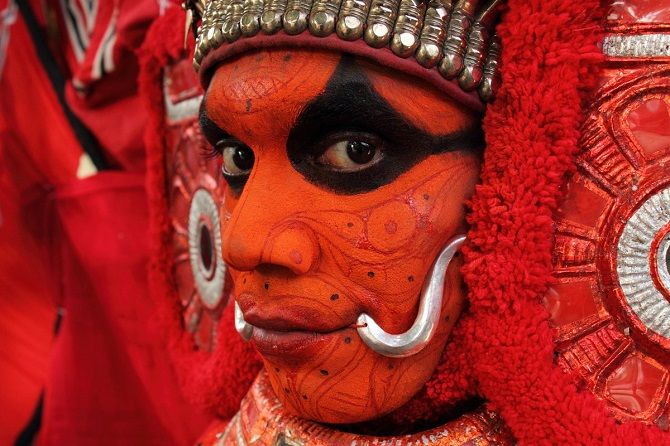
Photograph: @keralatourism/Twitter.
As the mist comes and goes, we go down to the valley, a few kilometers down the hill station to a totally unexplored and an inaccessible waterfall -- Ezharakkundu (seven-and-a-half pots), walking down a small path, one person at a time.
The waterfall has seven steps, with the last few being the tallest. The waterfall is live almost eight months of the year, starting June.
But if you want to explore more, remember, there is no proper access to the falls and the rocks are extremely slippery and sandwiched between deadly heights and depths.
With all the reluctance to leave the destination, literally forcing ourselves to head to Kannur, we reached Parassinikkadavu, where a famous temple of Muthappan (a Thiyya diety) is located.
Unlike many other dieties, Muthappan is offered dried fish and toddy. His vehicle is a dog and there are several idols of dogs along with a few live canines inside the small temple, which has Valapattanam river on its front yard.
The ritualistic Theyyam dance is performed almost every day, where the Muthappan theyyam will dance. The Vannan community performs the Theyyam, while the rituals are taken care by Thiyya community.
Parassinikkadavu is also known for a snake park, which is meant to create awareness among public about serpents and other reptiles.
By the time we leave for Chennai in the evening, the perspective of a different Kerala has been embossed in our minds.
Recommended for you: Onam with the great Indian family


